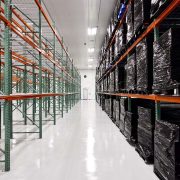In the pharmaceutical industry, maintaining the integrity of temperature-sensitive products is of utmost importance. Proper handling and storage practices are critical to safeguarding product efficacy and complying with regulatory requirements. Training warehouse staff on these practices is essential to mitigate risks associated with mishandling and ensure adherence to Good Manufacturing Practice (GMP) guidelines. This white paper explores the significance of training warehouse staff on handling temperature-sensitive products and how Euro-American Worldwide Logistics excels in providing comprehensive training solutions.
The Importance of Staff Training
Comprehensive training for warehouse staff on proper handling and storage practices for temperature-sensitive products offers numerous benefits:
- Product Integrity: Proper training equips staff with the knowledge and skills needed to handle temperature-sensitive products safely and effectively. This includes understanding temperature requirements, proper packaging, and handling procedures to prevent exposure to adverse conditions that could compromise product integrity.
- Regulatory Compliance: Training ensures compliance with GxP guidelines and regulatory requirements governing the storage and distribution of pharmaceutical products. Staff are educated on regulatory standards and best practices, reducing the likelihood of errors or violations during operations.
- Operational Efficiency: Well-trained staff contribute to improved operational efficiency by minimizing errors, accidents, and product losses. They understand the importance of accuracy, attention to detail, and adherence to standard operating procedures, leading to smoother warehouse operations.
- Quality Culture: Training fosters a culture of quality and accountability within the warehouse environment. Staff are empowered to take ownership of their responsibilities and prioritize product safety and compliance, ultimately enhancing overall quality management practices.
Euro-American Worldwide Logistics: Providing Comprehensive Training Solutions
Euro-American Worldwide Logistics recognizes the critical role of proper staff training in ensuring the integrity of temperature-sensitive products.
Conclusion
Training warehouse staff on proper handling and storage practices for temperature-sensitive products is essential for ensuring product integrity, regulatory compliance, and operational efficiency. Euro-American Worldwide Logistics excels in providing comprehensive training solutions tailored to the unique needs of pharmaceutical companies. By investing in staff training, companies can mitigate risks, foster a culture of quality and compliance, and uphold the highest standards of product safety and integrity. Partner with Euro-American to empower your warehouse staff with the knowledge and skills needed to handle temperature-sensitive products with confidence and competence.










